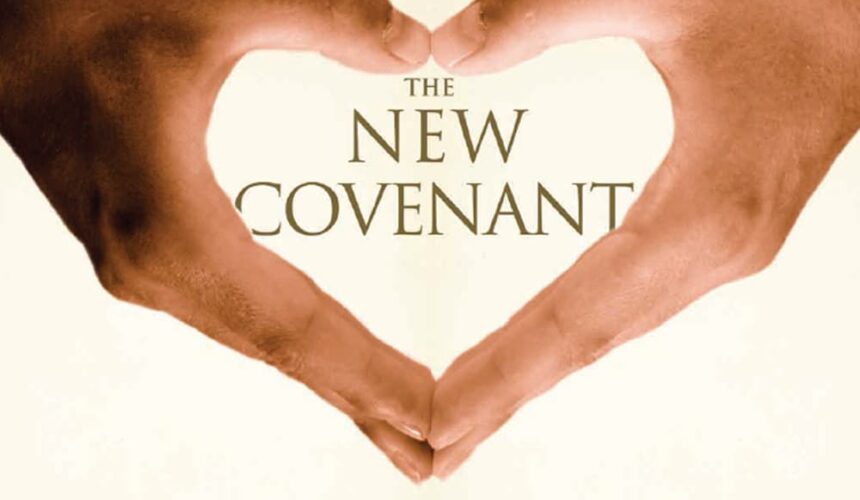4th Sunday of Advent 24 December 2023
Readings: 2 Sam 7. 1-11, 16; Rom 16. 25-end; Lk 1. 26-38
Theme: The Ark of the New Covenant
Anyone who enjoys the Indiana Jones films will have heard of the Ark of the Covenant. But what does the Bible say about it?
Our first reading today from 2 Samuel gives us a snippet of what, for the Old Testament, the Ark of God (Ark of the Covenant) represented. Essentially, the Ark of the Covenant represents God’s way of being especially close to us. In the Book of Exodus 25-27, God instructs Moses to build a tabernacle for him, so that as the people sojourned during the exodus, God could be with them. This took the form of a symbolic presence of God in the Tablets of the Ten Commandments, manna and Aaron’s rod. In 2 Samuel 6, King David brings this Ark of the Covenant to rest in Jerusalem and this represents the visible sign of God’s presence with the chosen people in the city of Zion and on the mountain of Jerusalem (Ps. 76. 1-2).
For the ancient Israelites this Ark of the Covenant played an important role in the liturgical festivities of the people. It was carried around under the glory of the Lord (Shekinah glory) and this glory covered the tent of meeting which surrounded the tabernacle (Ex 40. 34-35; Nm. 9. 18, 22).
Consequently, the Ark of the Covenant was what we might call a ‘bundled’ concept. It wrapped up into one the several ideas that had been germinating in the life of the people of Israel. It represented God’s especially close presence to the people of Israel, the Law of Moses and the symbols of God’s priestly, prophetic and kingly roles within the nation of Israel. It was all of these wrapped bundled up into one concept and during the liturgical festivals of Israel it played a central role in the meeting between God and God’s people.
So, when we come to that most beautiful of New Testament readings today, namely, the reading of the Annunciation in the Gospel of Luke 1. 26-38, we should understand this passage from St Luke’s Gospel as echoing the long and complex history of the people of Israel journeying with the Ark of the Covenant. Only now, the unfolding story of this special dwelling of God with God’s people takes on a particular form. No longer will the Ark of the Covenant be an elaborate golden box built according to precise measurements given by God, but now the presence of God to God’s people will be housed in a young woman, Mary. Mary will be the Ark of the New Covenant as she will house, in her womb, the presence of God, Jesus, Emmanuel. Just as the Ark of the Old Covenant would be overshadowed by the cloud of the glory of the Lord, so too the Ark of the New Covenant, Mary, will be “overshadowed by the power of the Most High”. However, now in the New Covenant, the shadowing presence of God will be revealed as the Holy Spirit, and so the child born to Mary will be truly God and truly man: the God-man, Jesus.
When we read the New Testament it is, therefore, necessary for a fuller understanding of it that we do so as part of a continuing conversation between God and humanity that has its roots deep in the Old Testament. This conversation, which the word of God in the Old Testament represents, now takes flesh in the New Testament. It is now a taking flesh which will be “housed” or one might say “tabernacled” in the womb of Mary for all humanity to behold.
Amongst the myriad of amazing things that we could single out from this account of the Annunciation, which is presented to us by the church today for contemplation on this fourth Sunday of Advent, one of the most important things for us to take in is that all of this occurs only because Mary gave her yes, her Fiat (so be it) to the angel Gabriel. Mary’s freewill to the message of the angel is given and so the child born in her womb will be the result of a new covenant between God and humanity. This is why Mary is called “The Ark of the New Covenant” by the early fathers of the church, such as the Bishop of Turin, Maximus, in the fifth century. The early church fathers reflected on this and that is why they called Mary the “New Eve”, because she reverses the disobedience of the first Eve in the garden of Genesis and replaces it with her obedience in her “Let it be”.
The acceptance of Mary of the announcement by the Angel Gabriel is thus the restoration of the Old Covenant made between God and God’s people and that is why Mary is rightfully called the Ark of the New Covenant.
In the name of the Father and of the Son and of the Holy Spirit. Amen.

